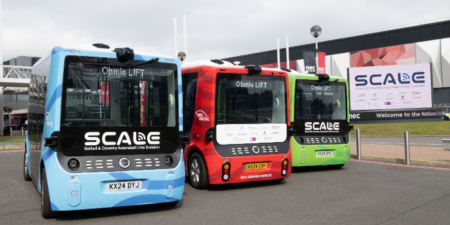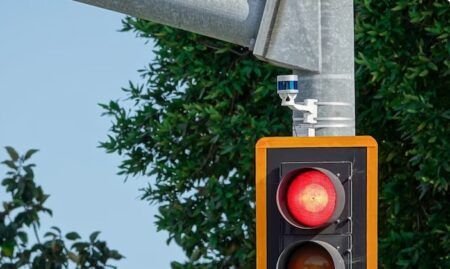Japanese automotive technology supplier Denso is using two different approaches to improve its in-vehicle vision and image recognition systems for use with advanced driver assistance and automated driving technologies.
Denso has announced that the new image sensors provided by Sony Semiconductor Solutions have helped it improve the performance of its in-vehicle vision sensors that are usually used with cameras to detect white lines on roads and objects ahead, so that they can now detect pedestrians during night conditions. This improvement helps strengthen the company’s suite of advanced driver assistant systems (ADAS) used to help prevent traffic accidents. Traffic accidents occurring at night often involve pedestrians and can cause severe injury. New Car Assessment Programs (NCAP) in Europe and Japan are considering including night-time pedestrian recognition within the scope of collision avoidance in their safety performance evaluation standards for automatic braking systems. The newly developed vision sensors will help meet this new safety requirement, as well as having applications in new autonomous driving systems.
Sony’s highly sensitive image sensors, which are also used in surveillance and other monitoring devices, enable cameras to take clear images of objects even at night. Denso has improved the quality of Sony’s image sensors in terms of ease of installation, heat resistance, and vibration resistance for use in vehicle-mounted vision systems. Denso has also used Sony’s image signal processors for noise reduction and optimization of camera exposure parameters to better recognize and take clearer images of pedestrians at night.
Denso has also reached an agreement with Toshiba to jointly develop an artificial intelligence technology called Deep Neural Network-Intellectual Property (DNN-IP), which will be used in image recognition systems that have been independently developed by the two companies to help achieve advanced driver assistance and automated driving technologies. DNN, an algorithm modeled after the neural networks of the human brain, is expected to perform recognition processing as accurately as, or even better than, the human brain. To achieve automated driving, automotive computers need to be able to identify different road traffic situations including a variety of obstacles and road markings, availability of road space for driving, and potentially dangerous situations. In image recognition based on conventional pattern recognition and machine learning, objects that need to be recognized by computers must be characterized and extracted in advance.
In DNN-based image recognition, computers can extract and learn the characteristics of objects on their own, thus significantly improving the accuracy of detection and identification of a wide range of objects. Because of the rapid progress in DNN technology, the two companies plan to make the technology flexibly extendable to various network configurations, and will also make the technology able to be implemented on in-vehicle processors that are smaller, consume less power, and feature other optimizations.




